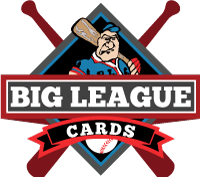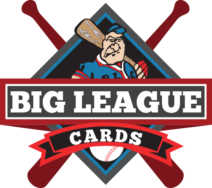Inside the Pack: Are Alterations Ever Acceptable?
Let’s start this post by stating the obvious: altering cards and not disclosing the alterations in an effort to profit is wrong. It’s bad for our hobby, it’s immoral, and it’s also illegal.
That said, I don’t want to bury the lede, so I’ll come right out and say it: I think the industry is too harsh on altered cards, irrationally so, and I don’t think there’s any sort of inherent moral issue with making alterations to cards as long as those alterations are disclosed. If I’m aware of a card’s altered state as a buyer, I don’t mind it.
I have a few altered cards in my personal collection. I like these cards because they have great eye appeal, which is what I always chase when buying cards, particularly vintage cards. Sometimes a trimmed or recolored card is more visually pleasing than another card in my price range, and I’ll opt for the altered card instead. I’m not being defrauded — I know fully well that I’m purchasing something that was altered, and whether the alteration was nefarious or not is inconsequential.
When I raised this point at the card shop recently, though, there was not a single soul in the building who agreed with me. Baseball card collectors as a whole are extremely unforgiving to alterations — but only sometimes. The majority of collectors have no issue with removing wax stains on vintage cards. The majority of collectors also have no issue with removing scratches from chrome cards. Some collectors accept “soaking” a card to remove stains, while others do not. So why is recoloring a vintage card a universal no-no? What about rolling out a crease?
This incongruous view of what alterations are and are not acceptable leads to issues in the grading space. Third party grading companies do not reject vintage cards that have wax stains cleaned from them. The main reason for this is that it’s virtually impossible to tell if wax stains have been cleaned off. But if other alterations, such as recoloring or trimming within 1/64 of an inch, are equally impossible to determine, why are they unacceptable?
I think a major issue is that with alterations seen by most collectors as an inherent evil, there is an impetus to carry out these alterations under the radar and profit from them by lying about the altered state of the card. To me, this is magnified by the fact that an alteration can only ever receive a grade of “Authentic — Altered” from PSA. Often times, an altered card with nice eye appeal outsells other graded cards with numerical grades. Take for instance this 1953 Topps Mickey Mantle, which sold by PWCC for upwards of $1700 despite the alteration. This unaltered card, graded simply Authentic, was sold by bbcardstor for less than half that total at $800.
Other than alterations, PSA assigns numerical grades to cards with deficiencies. If a card has pen markings on it, PSA ignores it, gives it a numerical grade, and then adds the “MK” qualifier after the number. Why not do the same for altered cards? If PSA allowed a submitter to check a box noting an alteration on a card, then gave it a numerical grade with a qualifier like “AL” for altered — or even more specific, like “TR” for trimmed and “RC” for recolored — I would think these cards would have a higher value than one simply marked “Altered.” See as evidence this PSA 7 (MC) of the same 1953 Topps Mantle card, with much worse eye appeal than the altered card posted above. It was sold by kenmorecollectibles for twice as much – over $3500.
It makes little logical sense to me that if I take a card, scribble on it indiscriminately, and submit it for grading, I can get a numerical grade with an MK qualifier. But if I take the same pen and apply it to a corner meticulously, I can no longer get a numerical grade: it’s just “Altered.”
Alterations themselves are not the problem – passing them off as real, unaltered cards is. Allowing an avenue for altered cards to be slabbed and graded, while recognizing their eye appeal, might be a good compromise for all parties involved to make. In the meantime, I’ll keep enjoying my altered cards, knowing full well they’re altered – and they’re beautiful.





(1) Comments
Bostondreams
I agree with you, honestly. For me it’s the eye appeal. Is it a beautiful card? Then I don’t care how it got that beauty, as long as it’s disclosed. I’m likely not reselling anyway.